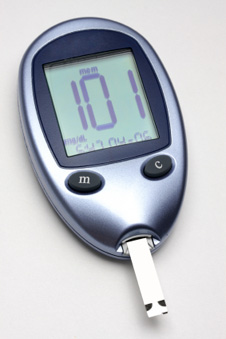

Once you know your blood sugar patterns, you'll know when you're on target or, conversely, why you're not.
Log books and data collection are a crucial part of keeping your diabetes under control. When you write down the number it is easier to see your blood sugar patterns and know when you are on target or, conversely, why you are not on target. For most people, trying to remember multiple blood sugar numbers and what was happening at the same time as the blood sugar check is difficult and often inaccurate.
Depending upon your type of treatment you may need to check you blood sugar once every few days or multiple times a day. If you are treated with diet alone, and your blood sugar is under control, you only may need to check every few days. In contrast, if your blood sugar is not well controlled and you are starting medications or taking insulin or pills that increase you insulin levels you should check multiple times a day. When taking insulin, you also need to record your insulin dose, and usually your food and carbohydrate intake and activity level. Ask you doctor for blood sugar monitoring and log book recommendations that are specific for you.
There are three ways people commonly fill out the log books. Each method is listed below.
The simple log tracks your blood sugar at various times on different days. This is suitable when your treatment doesn’t change or put you at risk of having a low blood sugar.
A more comprehensive log includes the blood sugar levels at various times on different days, and includes notations about exercise, food (carbohydrates) and medication doses. Use this log when you want to understand how your blood sugar is responding to different foods, activities and medication.
The most complex and intensive log book captures the most important variables that affect the blood sugar, including:
This intensive log is used when you are taking multiple doses of insulin or using an insulin pump.
Self assessment quizzes are available for topics covered in this website. To find out how much you have learned about Monitoring Your Diabetes, take our self assessment quiz when you have completed this section. The quiz is multiple choice. Please choose the single best answer to each question. At the end of the quiz, your score will display. If your score is over 70% correct, you are doing very well. If your score is less than 70%, you can return to this section and review the information.
©2007-2024 Collective work Martha Nolte Kennedy,
The Regents of the University of California.
All rights reserved.